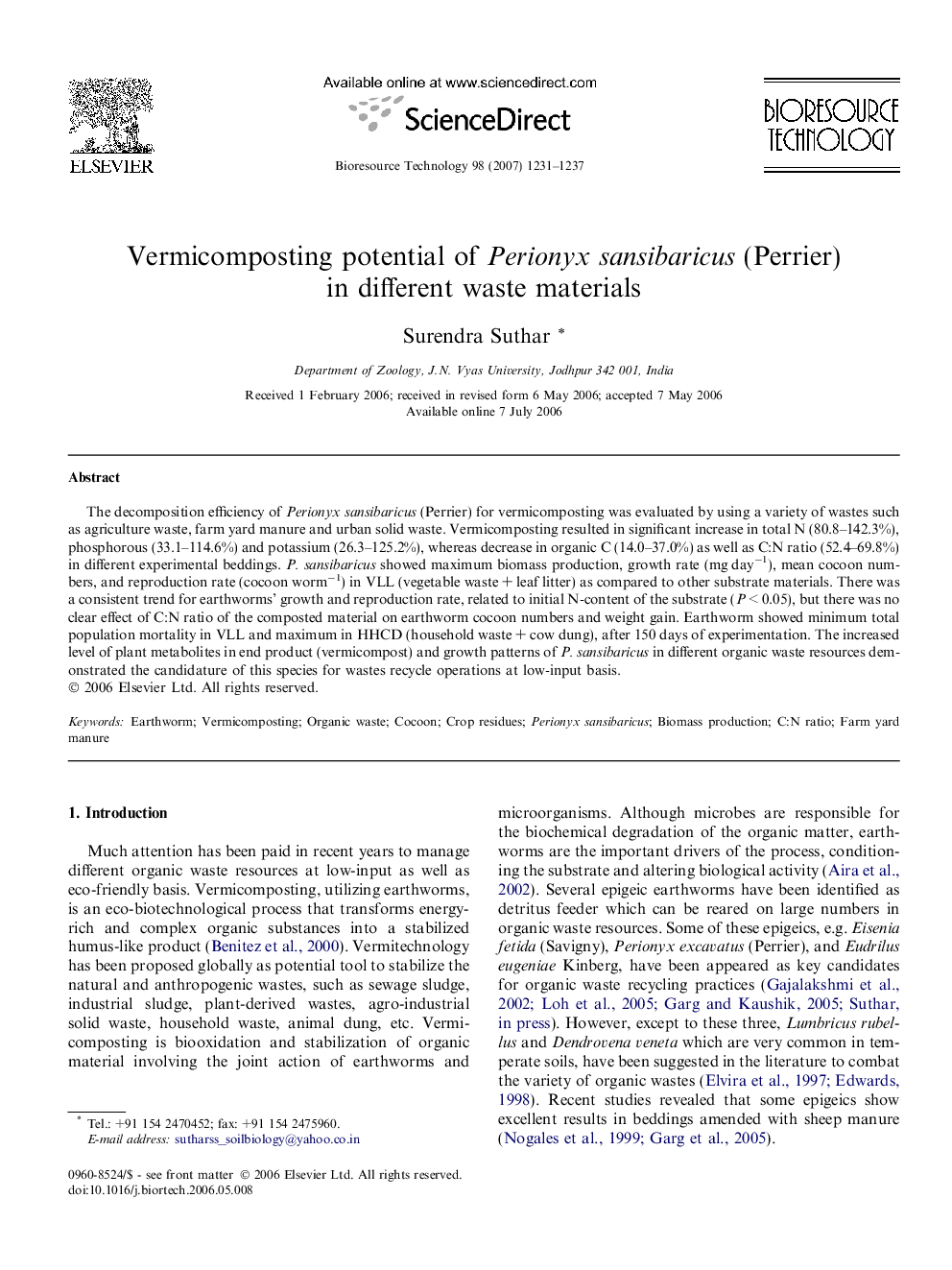| Article ID | Journal | Published Year | Pages | File Type |
|---|---|---|---|---|
| 685232 | Bioresource Technology | 2007 | 7 Pages |
The decomposition efficiency of Perionyx sansibaricus (Perrier) for vermicomposting was evaluated by using a variety of wastes such as agriculture waste, farm yard manure and urban solid waste. Vermicomposting resulted in significant increase in total N (80.8–142.3%), phosphorous (33.1–114.6%) and potassium (26.3–125.2%), whereas decrease in organic C (14.0–37.0%) as well as C:N ratio (52.4–69.8%) in different experimental beddings. P. sansibaricus showed maximum biomass production, growth rate (mg day−1), mean cocoon numbers, and reproduction rate (cocoon worm−1) in VLL (vegetable waste + leaf litter) as compared to other substrate materials. There was a consistent trend for earthworms’ growth and reproduction rate, related to initial N-content of the substrate (P < 0.05), but there was no clear effect of C:N ratio of the composted material on earthworm cocoon numbers and weight gain. Earthworm showed minimum total population mortality in VLL and maximum in HHCD (household waste + cow dung), after 150 days of experimentation. The increased level of plant metabolites in end product (vermicompost) and growth patterns of P. sansibaricus in different organic waste resources demonstrated the candidature of this species for wastes recycle operations at low-input basis.
